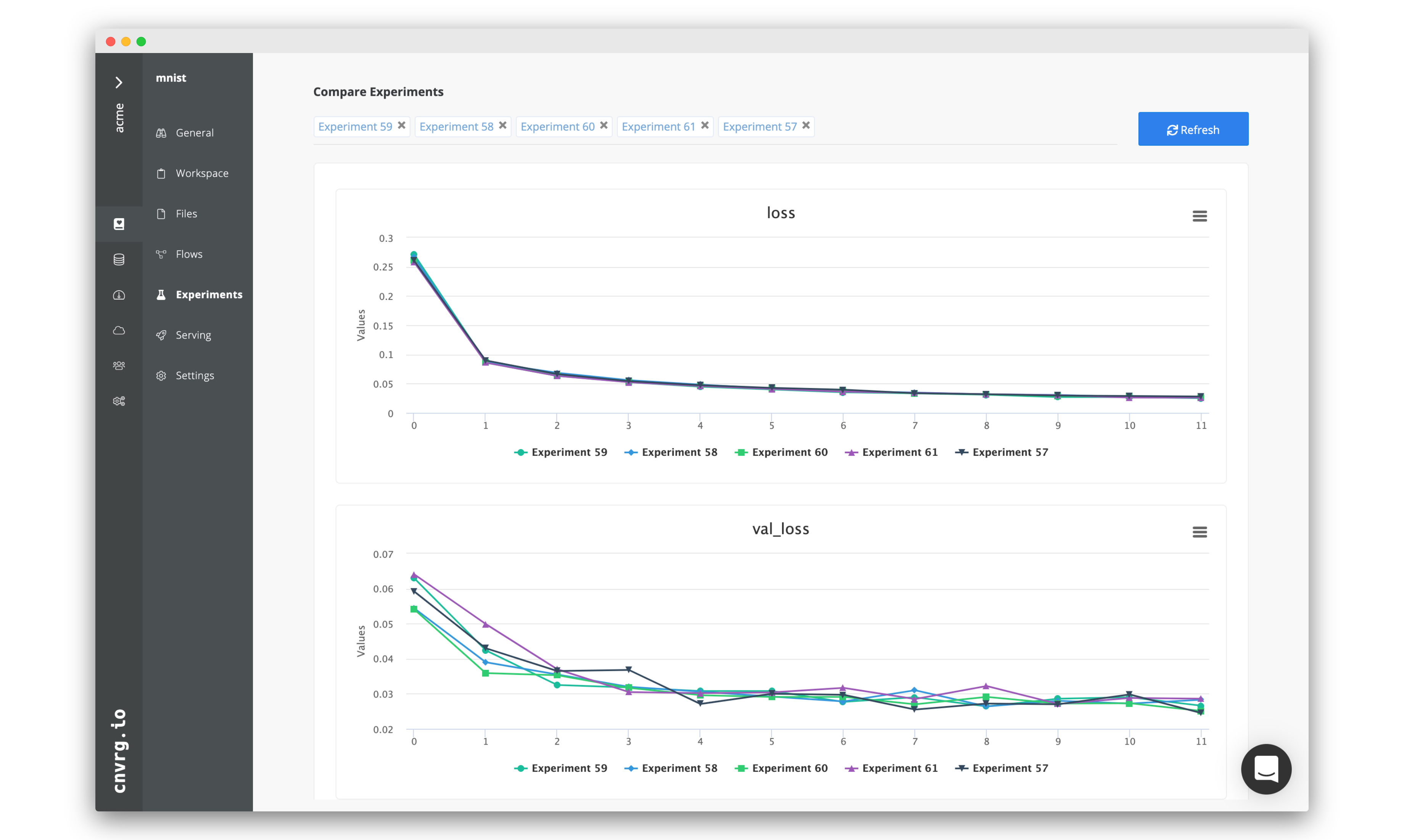# Advanced Model Tracking in Pytorch Lightning
cnvrg.io provides an easy way to track various metrics when training and developing machine learning models.
In the following guide we will create a custom Logger that will be used with the Pytorch Lighning package to track and visualize training metrics.

# Create and Use cnvrg Logger
Pytorch Lightning supports custom loggers that can automatically create logs and metrics in your experiments
# Add the cnvrg callback to your project
Save the following code as a file in your project - cnvrglogger.py
from pytorch_lightning.utilities import rank_zero_only
from pytorch_lightning.loggers import LightningLoggerBase
from pytorch_lightning.loggers.base import rank_zero_experiment
from cnvrg import Experiment
class CNVRGLogger(LightningLoggerBase):
def __init__(self, ):
super().__init__()
self._experiment = Experiment()
@property
def name(self):
return 'CNVRGLogger'
@property
@rank_zero_experiment
def experiment(self):
return self._experiment
@property
def version(self):
# Return the experiment version, int or str.
return '0.1'
@rank_zero_only
def log_hyperparams(self, params):
pass
@rank_zero_only
def log_metrics(self, metrics, step):
e = self._experiment
for m in metrics:
e.log_metric(m, metrics[m], step)
@rank_zero_only
def save(self):
# Optional. Any code necessary to save logger data goes here
# If you implement this, remember to call `super().save()`
# at the start of the method (important for aggregation of metrics)
super().save()
@rank_zero_only
def finalize(self, status):
# Optional. Any code that needs to be run after training
# finishes goes here
pass
In your training code, import the cnvrg logger and set it in the pytorch lightning initializer:
from cnvrglogger import CNVRGLogger
cnvrg_logger = CNVRGLogger()
# Initialize the logger inside the trainer
trainer = pl.Trainer(gpus=1, max_epochs=2, progress_bar_refresh_rate=20, logger=[cnvrg_logger])
In your training step, you can use the log function to log metrics and it will automatically log metrics in your experiment:
def training_step(self, batch, batch_nb):
x, y = batch
loss = F.cross_entropy(self(x), y)
self.log('loss', loss)
return loss
